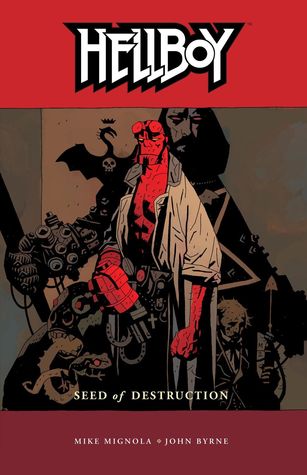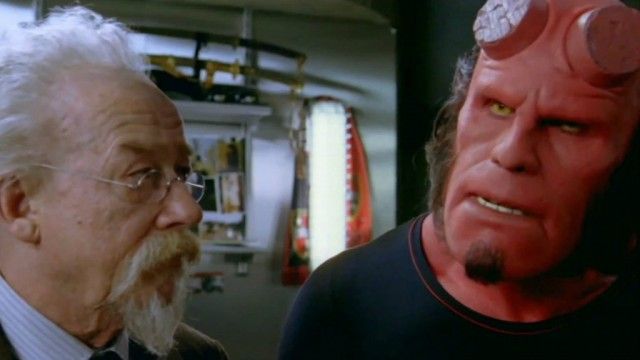 1999: NASA astronaut Nigel Walmsley is sent on a mission to intercept a rogue asteroid on a collision course with Earth. Ordered to destroy the comet, he instead discovers that it is actually the shell of a derelict space probe - a wreck with just enough power to emit a single electronic signal...
1999: NASA astronaut Nigel Walmsley is sent on a mission to intercept a rogue asteroid on a collision course with Earth. Ordered to destroy the comet, he instead discovers that it is actually the shell of a derelict space probe - a wreck with just enough power to emit a single electronic signal...
2014: Then a reply is heard. Searching for the source of this signal that comes from outside the solar system, Nigel discovers the existence of a sentient ship. When the new vessel begins to communicate directly with him, the astronaut learns of the horrors that await humanity.
First, a bit of backstory. I actually started this series, not knowing it was a series, back in the 80s. I'd picked up Across the Sea of Suns (book #2) through a sci-fi book club as a teen. Upon reading it, I realized that it wasn't a standalone but a sequel. However, there was enough backstory that it didn't matter. But then the ending was left wide open, so I knew that it was, in fact, a series. I was not amused and subsequently forgot about the series for decades.
By chance, while perusing through one of the local library's book sales, I came across Sailing Bright Eternity and discovered that it was the last book in a six-book saga. I bought it, and it has sat on my nightstand for years hence. So when I spotted this book last summer, I knew that I should go back and read the whole series start-to-finish. Besides, I really liked the titles of the books.
I might be regretting that decision.
This book was written from 1972-1977 and parts were published in If magazine over that time. The book starts in 1999 and runs through 2019 (reprints bumped those dates back 20 years). There is so much 70s dreck hanging over this story that it's downright suffocating. Everything that was ugly about the 70s is concentrated and perpetuated for forty years! The Clean Air Act never accomplished anything, people passively gave up their cars for mass transit because Detroit and Tokyo couldn't innovate, Moore's Law failed to materialize, and the US never snapped out of its economic funk and continued to slowly slide into turpitude. It's enough to make me want to thank Reagan for his "Morning in America" pep rally speeches just to avoid this rubbish.
What arises out of this miasma is a new religious movement dubbed The New Sons. As far as I can tell, it's an amalgam of hippies, Eastern philosophy, Old Testament Christianity, and mysticism that infects the country and the world. Traditional religions are powerless before it and are soon negotiating for inclusion. It comes across as wholly implausible and schlocky. Maybe if I'd been trapped in Haight-Ashbury and my girlfriend was seduced by a bunch of hippies, I'd believe it. In essence, this is what happens to the protagonist, Nigel Walmsley.
Nigel is an insufferable, self-absorbed, patronizing jerk. A certain comment he made regarding a potential asteroid impact in India makes me think he might even be racist. He thinks he's right about everything and disobeys orders because he's right, damnit! What sucks is that too often he is right. But who wants to give that guy the satisfaction? He's a bit of a hypocrite: After witnessing a New Sons' bonfire ritual, he calls it a "license for public rutting" then goes home to have a three-way. Said three-way is Benford's rather clumsy way of informing the reader about Nigel's polyamorous relationship. What's worse is that most of the other characters in the novel are pathetic: power mad bureaucrats and passive aggressive religious zealots. In his relationship, Alexandria seems about ready to pass away from ennui (yes, she's ill, but Benford doesn't take advantage of her lucid moments to develop her character) while Shirley is always angry at Nigel for something. Too much of this book—almost a third—is spent detailing this relationship. While there's some hope for him by the end of the novel, after reading his stream of consciousness babble, I can't help but think he's just going to be a different flavor of insufferable, self-absorbed, patronizing jerk going forward.
So is there anything good here? Yeah, sure. Nigel's encounters with the aliens and anything involving Dr. Ichiro and Nikka. There's the "big idea" that attempts to answer the Fermi Paradox. But there isn't enough of this to counter the swamp of bad I had to slog through.
Now I probably shouldn't be so critical of a book that was written over 40 years ago and was one of Benford's first works, but this was a book that was nominated for both the Nebula and Locus awards. Sure, I'll give him points for the concept, but he lacked vision. How is there a space program if the economic malaise of the 70s never ends and only worsens? He was a physicist at a prominent university; how did he not hear about the advances underway with microelectronics? I gotta use a fax machine on the Moon 50 years after we set foot on it? Maybe we can excuse him for not foreseeing the innovations that would drive the last decades of the 20th century, but not his characters' behavior. Benford writes this damnably sexist scene where Alexandria's doctor won't tell her his prognosis of her medical condition until after Nigel arrives from work, and even then, he directs his conversation to Nigel as if Alexandria is no more than a sick pet. She was an executive at American Airlines negotiating a deal with a Brazilian company! How can Benford do that to her?
Maybe, this book probably would've been easier to deal with reading it right after it was finished, trapped in the 70s, but by 1980 this book's days were numbered.
A weak one and a half out of five stars. Maybe less.
\_/
DED
 Goodreads has been recommending this one to me for some time, and good many of the people I follow there gushed with praise. My local library had a copy so I figured that I'd finally pick it up. I burned through it in two days. I only put it down because I had to sleep. Then I read it again.
Goodreads has been recommending this one to me for some time, and good many of the people I follow there gushed with praise. My local library had a copy so I figured that I'd finally pick it up. I burned through it in two days. I only put it down because I had to sleep. Then I read it again.
 When I picked up this graphic novel from the library, I had no idea who
When I picked up this graphic novel from the library, I had no idea who  I saw the
I saw the  Hellboy's relationships with other characters is largely undeveloped in this issue of the comic. Other than a little background on Abe and Liz, we really don't get any reason why Hellboy cares about them. And Professor Bruttenholm? Forget it. In the movie, Perlman and Hurt really develop the relationship. Here, it's over before it starts with nary a thought or feeling. I have to imagine that these relationships and characters were expounded upon in subsequent issues.
Hellboy's relationships with other characters is largely undeveloped in this issue of the comic. Other than a little background on Abe and Liz, we really don't get any reason why Hellboy cares about them. And Professor Bruttenholm? Forget it. In the movie, Perlman and Hurt really develop the relationship. Here, it's over before it starts with nary a thought or feeling. I have to imagine that these relationships and characters were expounded upon in subsequent issues.
 Four hundred years from now mankind is strung out across a region of interstellar space inherited from an ancient civilization discovered on Mars. The colonies are linked together by the occasional sublight colony ship voyages and hyperspatial data-casting. Human consciousness is digitally freighted between the stars and downloaded into bodies as a matter of course.
Four hundred years from now mankind is strung out across a region of interstellar space inherited from an ancient civilization discovered on Mars. The colonies are linked together by the occasional sublight colony ship voyages and hyperspatial data-casting. Human consciousness is digitally freighted between the stars and downloaded into bodies as a matter of course.